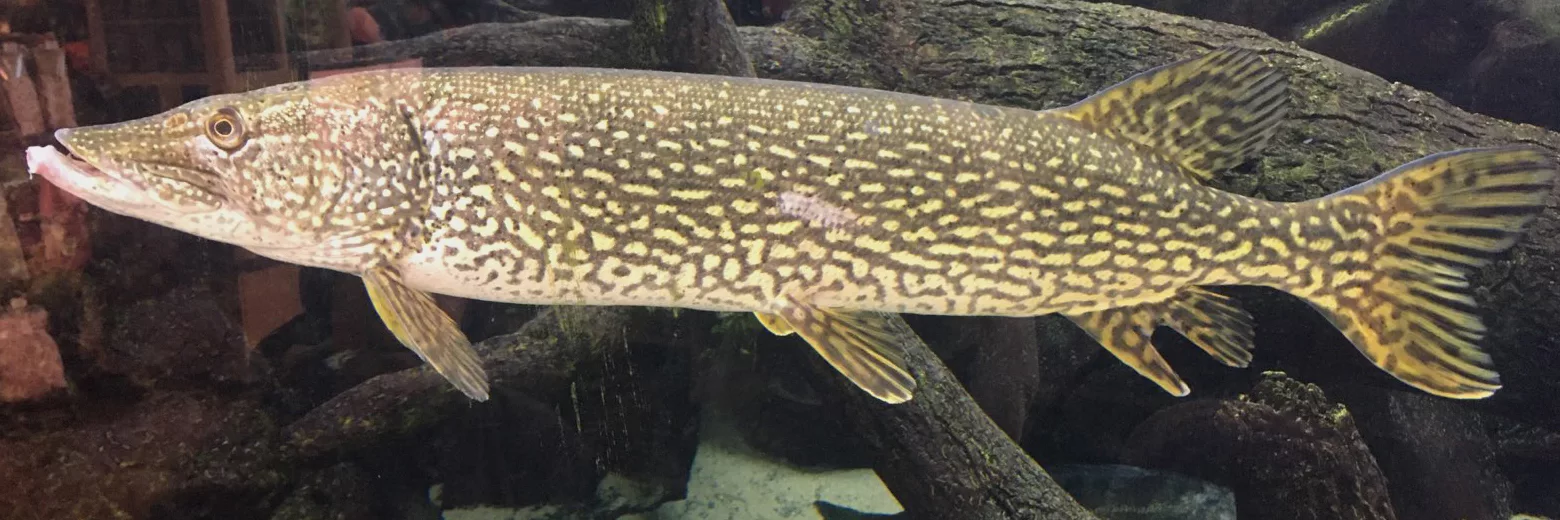
Pike are notoriously slimy, and the protein helps protect their bodies from infection and other maladies. Simonson Photo.
By Nick Simonson
While unhooking my second pike of the morning, the two-pound fish slipped quickly out of my wet hand and back into the water with a splash. All that was left as evidence that I had even caught it was a chewed-up plastic tail and a small coating of slime ringing my hand between my thumb and forefinger. I righted the curly-tailed grub on my jig and wiped my hand on the back of my jeans and fired off another cast.
As I worked the offering through the weeds and landed a few more fish from the dock at the lake I got to thinking about pike and one of their many hallmarks, which along with their aggressive nature, makes them a notable species. That being the slime coat which serves to keep the fish healthy and has earned them several unflattering nicknames such as “snot rocket” and “slimer.” And while all species of fish have some sort of protective slime coat that keeps infection at bay and regulates their bodies’ natural processes, some fish like pike, muskies, catfish and bullheads are better known for their slimy nature. And their notable coat may be one reason for their prevalence in the waters of the upper Midwest.
The slime coat found on fish is a protein-based mucous lining that acts as the first line of defense through a combination of enzymes and antibodies which repel bacterial and fungal infections and parasites which otherwise might infect a fish. This coating also works to keep chemicals, such as electrolytes which regulate the fish’s body functions, in and on the fish, keeping it in good health. It has also been hypothesized that the slime coating acts as a transference point for chemicals related to breeding. Below the slime coat are the scales and the skin of the fish, forming a total of three protective layers which keep in what needs to be in, and keep out those things which may sicken or kill the fish.
There are many factors which can influence the health of a fish’s slime coat, including water quality, water temperature, dissolved oxygen levels in the water, stress from evading predators or reproducing and most notably physical damage from a variety of sources. Even on species like pike and catfish, where there appears to be an overabundance of the protective slime coat, the removal of just a portion of it due to dry hands, an abrasive net, or being set on the floor of a boat can cause life-threatening damage. For these reasons, anglers should take care of their quarry when handling them, as damage to the slime coat can turn a healthy-appearing release into delayed mortality.
When handling fish which are to be released, some guidelines are necessary to prevent damage to the slime layer. First, land fish with a non-abrasive net such as one made of rubber or rubber-coated nylon. Large mesh cradles are also effective in preventing damage to the slime coat of big fish like pike and muskies. Second, when handling fish, due so with damp hands. Dry fingers and calluses will pull slime off whereas the presence of water between hands and fish will reduce the coefficient of friction and preserve more of the coating. Third, do not drop or set the fish down in the boat as carpet, sand, dirt or other common in-hull debris can act as an abrasive which would effectively remove slime when a fish is out of the water. Finally, use the proper release tools at boatside in the water to reduce stress and time out of the water. If you’re just looking for a quick release, there’s no need to take the fish out of the water. If you want a photo of your catch, make it a quick one and have someone ready with the camera. Keep the fish out of the water as little as possible, as stress can make slight slime coat damage from landing even worse after the release.
These tips will help you get a feel for what fish need to protect one of their best-evolved assets. Healthier fish after the release are what keep great catch-and-release fisheries around our area filled with quality specimens. Beyond pike, muskies and catfish, remember that all species have a slime coat that proper handling can protect – further preserving the fish for another outing. Take care this season to handle your quarry properly and help keep the slime off your hands and where it belongs…in our outdoors.
